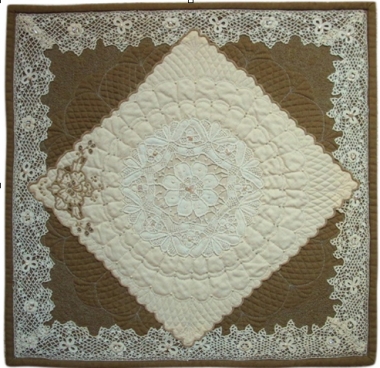Vintage Linens
Vintage Linens are a favorite collectible by quilt lovers. Historically, women had a hope chest full of items for the home, such as tablecloths, handkerchiefs, pillow cases, napkins, hand and tea towels to name a few. The linens were often embroidered with floral designs and the makers initials, embellished with cutwork, crochet and lace. These types of linens, and the pretty printed table cloths and tea towels of the mid 1900s are often a favorite of quilters who like to use them in making quilts and other pieced items. These pieces can used whole or cut for blocks to make beautiful quilts. For those who cringe at the thought of cutting up perfect vintage specimens, there are linens available at antique shops and thrift stores that are not in pristine condition and great candidates for the cutting table.
Benefits of Vintage Linens
- Vintage Linens soft and beautiful.
- Vintage Linens have a sense of history; based on the style and embellishments they can be dated.
- Vintage linens are often embellished with a variety of needlework.
- The quality of the linen (and sometimes cotton) used in vintage linens is often not available in local fabric stores.
Tools and Supplies for Vintage Linens
You can still use the same basic tools working with Vintage Linens, just be a bit more delicate while handling.
- Rotary cutter
- Ruler
- Self-healing cutting mat
What I Wish I Knew When I Started using Vintage Linens
VINTAGE LINENS may be easier to clean than you think. Always start with a nice 15 to 20 minute soak in warm water. If you feel they are not bright enough add a bit of mild, phosphate-free soap to the water and gently wash again. If there are stains remaining, sprinkle the stain with baking soda and add a few drops of white vinegar, or try rubbing the stain with lemon juice. Once the linen is clean, rinse thoroughly and lay them out to air dry.









